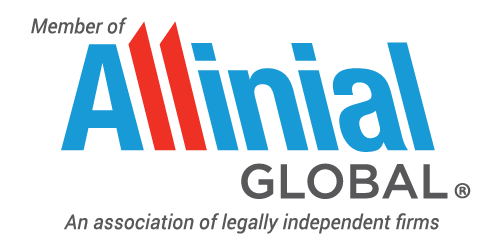Five Overlooked Tax Breaks for Individuals
Are you confused about which credits and deductions you can claim on your 2022 tax return? You’re not alone. With tax law becoming more complicated every year, it’s hard to remember which tax breaks are available in any given year. With that in mind, here are five tax breaks for 2022 that you won’t want to overlook.
1. State Sales and Income Taxes
The IRS allows for a deduction of either state income tax paid or state sales tax paid, whichever is greater. As an individual, your deduction of state and local income, sales, and property taxes is limited to a combined total deduction of $10,000 ($5,000 if married filing separately). If you bought a big ticket item like a car or boat in 2022, deducting the sales tax might be more advantageous, but don’t forget to figure out any state income taxes withheld from your paycheck, just in case. If you’re self-employed, you can include the state income paid from your estimated payments. In addition, if you paid state tax when filing your 2021 tax return in 2022, you can include that amount in the state tax deduction on your 2022 federal tax return this year.
2. Child and Dependent Care Tax Credit
Most parents realize that there is a tax credit for daycare when their child is young, but they might not realize that once a child starts school, the same credit can be used for before and after school care, as well as day camps during school vacations. The child and dependent care tax credit can also be taken by anyone who pays a home health aide to care for a spouse or other dependent such as an elderly parent who is physically or mentally unable to care for him or herself. The credit is worth a maximum of $1,050 or 35% of $3,000 of eligible expenses per dependent. For two or more qualifying children, the credit can be up to $6,000.
3. Student Loan Interest Paid by Parents
Typically, a taxpayer can only deduct interest on mortgages and student loans if they are liable for the debt; however, if a parent pays back their child’s student loans, the IRS treats the money as if the child paid it. As long as the child is not claimed as a dependent, they can deduct up to $2,500 in student loan interest paid by the parent. The deduction can be claimed even if the child does not itemize.
4. Medical Expenses
Most people know medical expenses are deductible if they are more than 7.5% of AGI for tax year 2022. They often don’t realize which medical expenses can be deducted, such as medical miles driven to and from appointments and travel (airline fares or hotel rooms) for out-of-town medical treatment. For 2022, these amounts are 22 cents per mile from July 1-December 31, 2022, and 18 cents per mile from January 1-June 30, 2022. For tax year 2023, the rate is 22 cents per medical mile driven.
Other deductible medical expenses that taxpayers might not be aware of include: health insurance premiums, prescription drugs, co-pays, and dental premiums and treatment. Long-term care insurance (deductible dollar amounts vary depending on age) is also deductible, as are prescription glasses and contacts, counseling, therapy, hearing aids and batteries, dentures, oxygen, walkers, and wheelchairs.
Self-employed individuals. If you’re self-employed, you can deduct the amount of your entire health insurance premium, and if you pay health insurance premiums for an adult child under age 27, you may be able to deduct them as well. Self-employed individuals aged 65 or older can also deduct the amounts paid for medicare premiums as long as they do not have a regular job covered under their (or their spouse’s) employer’s health care plan.
5. Bad Debt
If you’ve loaned money to a friend but were never repaid, you may qualify for a non-business bad debt tax deduction of up to $3,000 annually. To qualify, however, the debt must be totally worthless in that there is no reasonable expectation of payment. Non-business bad debt is deducted as a short-term capital loss, subject to the capital loss limitations. You may take the deduction only in the year the debt becomes worthless. You do not have to wait until a debt is due to determine whether it is worthless. Any amount you are not able to deduct can be carried forward to reduce future tax liability.
What To Do if You’re Missing Important Tax Documents
As the April 18th tax deadline quickly approaches, last-minute tax filers should make sure they have all their documents before filing a tax return. You should have received a Form W-2, Wage and Tax Statement, from each of your employers for use in preparing your federal tax return. Employers must furnish this record of 2022 earnings and withheld taxes no later than January 31, 2023. As such, most taxpayers should have received their documents near the end of January, including:
- Forms W-2, Wage and Tax Statement
- Form 1099-MISC, Miscellaneous Income
- Form 1099-INT, Interest Income
- Form 1099-NEC, Nonemployee Compensation
- Form 1099-G, Certain Government Payments; like unemployment compensation or state tax refund
If You Have Not Received a W-2 or Form 1099
Taxpayers who haven’t received a W-2 or Form 1099 should contact the employer, payer, or issuing agency and request the missing documents. This also applies to those who received an incorrect W-2 or Form 1099.
If they can’t get the forms, they must still file their tax return on time or get an extension to file. To avoid filing an incomplete or amended return, they may need to use Form 4852, Substitute for Form W-2, Wage, and Tax Statement or Form 1099-R, Distributions From Pensions, Annuities, Retirement or Profit-Sharing Plans, IRAs, Insurance Contracts, Etc.
If a taxpayer doesn’t receive the missing or corrected form in time to file their tax return, they can estimate the wages or payments made to them and any taxes withheld. They can use Form 4852 to report this information on their federal tax return.
If they receive the missing or corrected Form W-2 or Form 1099-R after filing their return and the information differs from their previous estimate, they must file Form 1040-X, Amended U.S. Individual Income Tax Return.
Incorrect Form 1099-G for Unemployment Benefits
Unemployment compensation is taxable and must be reported on the recipient’s tax return.
Taxpayers who receive an incorrect Form 1099-G, Certain Government Payments (Info Copy Only), for unemployment benefits they did not get should contact the issuing state agency to request a revised Form 1099-G showing their correct benefits. Taxpayers who are unable to obtain a timely, corrected form from states should still file an accurate tax return, reporting only the income they did receive.
Filing an Amended Return
If you receive a corrected W-2 or 1099 after your return is filed and the information it contains does not match the income or withheld tax that you reported on your return, you must file an amended return on Form 1040X, Amended U.S. Individual Income Tax Return.
Tax Implications When Employed in the Family Business
When a family member employs someone, the tax implications depend on the relationship and the type of business. Taxpayers and employers need to understand their tax situation. Here is what to know:
Married People in Business Together
- Generally, a qualified joint venture whose only members are a married couple filing a joint return isn’t treated as a partnership for federal tax purposes.
- Someone who works for their spouse is considered an employee if the first spouse makes the business’s management decisions and the second spouse is under the direction of the first spouse.
- The wages for someone who works for their spouse are subject to income tax withholding and Social Security and Medicare taxes, but not to FUTA tax.
Children Employed by Their Parents
If the business is a parent’s sole proprietorship or a partnership in which both partners are parents of the child:
- Wages paid to a child of any age are subject to income tax withholding.
- Wages paid to a child age 18+ are subject to social security and Medicare taxes.
- Wages paid to a child age 21+ are subject to Federal Unemployment Tax Act
If the business is a corporation, estate, or a partnership in which one or no partners are parents of the child:
- Payments for services of a child are subject to income tax withholding, social security taxes, Medicare taxes, and FUTA taxes, regardless of age.
Parents Employed by Their Child
If the business is a child’s sole proprietorship:
- Payments for services of a parent are subject to income tax withholding, social security taxes, and Medicare taxes.
- Payments for services of a parent are not subject to FUTA tax regardless of the type of services provided.
If the business is a corporation, a partnership, or an estate:
- The payments for the services of a parent are subject to income tax withholding, social security taxes, Medicare taxes, and FUTA taxes.
If the parent is performing services for the child but not for the child’s trade or business:
- Payments for services of a parent are not subject to social security and Medicare taxes unless the services are for domestic services and several other criteria apply.
- Payments for services of a parent are not subject to FUTA tax regardless of the type of services provided.
Questions?
Many people work for a family member, whether a child is helping at their parent’s shop or spouses running a business together. If you are one of them, your tax situation may be more complicated than you think. Please call the office for assistance if you need help understanding how your work situation affects your taxes.
Refundable vs. Non-refundable Tax Credits
Tax credits can reduce your tax bill or give you a bigger refund, but not all tax credits are created equal. While most tax credits are refundable, some credits are nonrefundable. Still, before we look at the difference between refundable and nonrefundable tax credits, it’s important to understand the difference between a tax credit and a tax deduction.
Understanding the Difference between a Tax Credit and a Tax Deduction
Tax credits reduce your tax liability dollar for dollar and are more valuable than tax deductions that reduce your taxable income and are tied to your marginal tax bracket. Let’s look at the difference between a tax credit of $1,000 and a tax deduction of $1,000 for a taxpayer whose income places them in the 22% tax bracket:
- A tax credit worth $1,000 reduces the amount of tax owed by $1,000 – the same dollar amount.
- A tax deduction worth the same amount ($1,000) only saves you $330, however (0.22 x $1,000 = $220). As you can see, tax credits save you more money than tax deductions.
Tax Credits: Refundable vs. Nonrefundable
A refundable tax credit reduces the federal tax you owe and could result in a refund if it is more than you owe. Let’s say you are eligible for the Child Tax Credit for $1,000 but only owe $200 in taxes. The additional amount ($800) is treated as a refund.
A nonrefundable tax credit means you get a refund only up to the amount you owe. For example, if you are eligible to take an American Opportunity Tax Credit worth $1,000 and the amount of tax owed is only $800, you can only reduce your taxable amount by $800 – not the full $1,000.
Examples of Refundable Tax Credits
- The Earned Income Tax Credit
- Additional Child Tax Credit
- Premium Tax Credit
Nonrefundable Tax Credits
Examples of nonrefundable tax credits include:
- Adoption Tax Credit
- Electric Vehicle Tax Credit
- Foreign Tax Credit
- Mortgage Interest Tax Credit
- Residential Energy Property Credit
- Credit for the Elderly or the Disabled
- Credit for Other Dependents
- The Saver’s Credit
Partially Refundable Tax Credits
Some tax credits are only partially refundable such as:
- Child Tax Credit (fully refundable in 2021 and 2022)
- American Opportunity Tax Credit
Social Security Benefits: Are They Taxable?
Social Security benefits include monthly retirement, survivor, and disability benefits; they do not include Supplemental Security Income (SSI) payments, which are not taxable. Generally, you pay federal income taxes on your Social Security benefits only if you have other substantial income in addition to your benefits. Your income and filing status affect whether you must pay taxes on your Social Security. About 40 percent of people who get Social Security must pay income taxes on their benefits.
At the end of each year, the Social Security Administration sends a Form SSA-1099, Social Security Benefit Statement, showing the amount of benefits you received. Use this statement when you complete your federal income tax return to determine if you must pay taxes on your benefits.
Although you’re not required to have Social Security withhold federal taxes, you may find it easier than paying quarterly estimated tax payments.
An easy method of determining whether any of your benefits might be taxable is to take one-half of the Social Security money collected during the year and add it to your other income. Other income includes pensions, wages, self-employment, interest, dividends, capital gains, and any other taxable income that must be reported on your tax return. On the 1040 tax return, your “combined income” is the sum of your adjusted gross income, nontaxable interest, and half of your Social Security benefits.
Taxpayers Filing an Individual Federal Tax Return
- If your combined income (adjusted gross income + nontaxable interest + 1/2 of your Social Security benefits) is between $25,000 and $34,000, you may have to pay income tax on up to 50 percent of your benefits.
- If it is more than $34,000, up to 85 percent of your benefits may be taxable.
Taxpayers Filing a Joint Federal Tax Return
- If you and your spouse have a combined income (adjusted gross income + nontaxable interest + 1/2 of your (and your spouse, if applicable) Social Security benefits) that is between $32,000 and $44,000, you may have to pay income tax on up to 50 percent of your benefits.
- If it is more than $44,000, up to 85 percent of your benefits may be taxable.
Married Taxpayers Filing Separately
Up to 85% of social security benefits may be taxable if you are:
- A married taxpayer who lived apart from your spouse for all of 2022 with more than $34,000 income
- A married taxpayer who lived with your spouse at any time during 2022
Pensions from Work
If you get a pension from work for which you paid Social Security taxes, that pension won’t affect your Social Security benefits. However, if you get a retirement or disability pension from work not covered by Social Security, we may reduce your Social Security benefit. Work not covered by Social Security includes the federal civil service, some state or local government employment, or work in a foreign country.
State Taxes
Eleven states tax social security income, including Colorado, Connecticut, Kansas, Minnesota, Missouri, Montana, Nebraska, New Mexico, Rhode Island, Utah, and Vermont.
Retiring Abroad?
Retirement income is generally not taxed by other countries. As a U.S. citizen retiring abroad who receives Social Security, for instance, you may owe U.S. taxes on that income but may not be liable for tax in the country where you’re spending your retirement years.
If Social Security is your only income, your benefits may not be taxable, and you may not need to file a federal income tax return. However, if you receive income from other sources (either U.S. or country of retirement) as well, from a part-time job or self-employment, for example, you may have to pay U.S. taxes on some of your benefits – the same as if you were still living in the U.S.
You may also be required to report and pay taxes on any income earned in the country where you retired. Each country is different, so consult a local tax professional specializing in expatriate tax services.
Even if you retire abroad, you may still owe state taxes – unless you established residency in a state that does not tax retirement income, such as Florida, before you moved overseas. Another thing to remember is that some states honor the provisions of U.S. tax treaties, and some do not. Therefore, it is prudent to consult a tax professional before choosing a retirement location.
There’s Still Time To Make an IRA Contribution for 2022
If you haven’t contributed funds to an Individual Retirement Account (IRA) for tax year 2022 or put in less than the maximum allowed, you still have time to do so. You can contribute to either a traditional or Roth IRA until the April 18, 2023, due date, not including extensions.
Be sure to tell the IRA trustee that the contribution is for 2022. Otherwise, the trustee may report the contribution as being for 2023 when they get your funds.
Generally, you can contribute up to $6,000 of your earnings for tax year 2022 (up to $7,000 if you are age 50 or older). You can fund a traditional IRA, a Roth IRA (if you qualify), or both, but your total contributions cannot exceed these amounts.
Traditional IRA. You may be able to take a tax deduction for the contributions to a traditional IRA, depending on your income and whether you or your spouse, if filing jointly, are covered by an employer’s pension plan.
Roth IRA. You cannot deduct Roth IRA contributions, but the earnings on a Roth IRA may be tax-free if you meet the conditions for a qualified distribution.
The IRS announces the cost of living adjustments and limitations for retirement savings plans each year. Saving for retirement should be part of everyone’s financial plan, and it’s important to review your retirement goals every year to maximize savings.
State Payments Excluded From 2022 Federal Returns
Taxpayers in 21 states received special payments related to general welfare and disaster relief in 2022. However, according to recently issued guidance from the IRS, they will not need to report these payments on their 2022 federal tax returns. The special tax refunds or payments made by certain states were related to the pandemic and its associated consequences. Generally, payments made by states are includable in income for federal tax purposes. Due to this unique and complex situation, the rules surrounding their treatment for federal income tax purposes are more complex.
As such, people in the following states do not need to report these state payments on their 2022 tax return: California, Colorado, Connecticut, Delaware, Florida, Hawaii, Idaho, Illinois, Indiana, Maine, New Jersey, New Mexico, New York, Oregon, Pennsylvania, and Rhode Island. Alaska is included in this group as well. Still, taxpayers should be aware that the annual payment of Alaska’s Permanent Fund Dividend does not apply to this exception as it is considered taxable income on federal tax returns.
Additionally, taxpayers in Georgia, Massachusetts, South Carolina, and Virginia will not include state payments in income for federal tax purposes if they meet certain requirements. For these individuals, state payments will not be included for federal tax purposes if the payment is a refund of state taxes paid and either the recipient claimed the standard deduction or itemized their deductions but did not receive a tax benefit.
To assist taxpayers who have received these payments in filing their returns in a timely fashion, additional information is provided below:
Refund of State Taxes Paid
If the payment is a refund of state taxes paid and either the recipient claimed the standard deduction or itemized their deductions but did not receive a tax benefit (for example, because the $10,000 tax deduction limit applied), the payment is not included in income for federal tax purposes.
Payments from the following states in 2022 fall in this category and will be excluded from income for federal tax purposes unless the recipient received a tax benefit in the year the taxes were deducted.
- Georgia
- Massachusetts
- South Carolina
- Virginia
General Welfare and Disaster Relief Payments
If a payment is made for the promotion of the general welfare or as a disaster relief payment, for example, related to the outgoing pandemic, it may be excludable from income for federal tax purposes under the General Welfare Doctrine or as a Qualified Disaster Relief Payment. Determining whether payments qualify for these exceptions is a complex fact-intensive inquiry that depends on several considerations.
The IRS has reviewed the types of payments made by various states in 2022 that may fall into these categories. Given the complicated fact-specific nature of determining the treatment of these payments for federal tax purposes balanced against the need to provide certainty and clarity for individuals who are now attempting to file their federal income tax returns, the IRS has determined that in the best interest of sound tax administration and given the fact that the pandemic emergency declaration is ending in May 2023 making this an issue only for the 2022 tax year, if a taxpayer does not include the amount of one of these payments in its 2022 income for federal income tax purposes, the IRS will not challenge the treatment of the 2022 payment as excludable for income on an original or amended return.
Payments from the following states fall in this category, and the IRS will not challenge the treatment of these payments as excludable for federal income tax purposes in 2022.
- Alaska (Only for the supplemental Energy Relief Payment received in addition to the annual Permanent Fund Dividend.)
- California
- Colorado
- Connecticut
- Delaware
- Florida
- Hawaii
- Idaho
- Illinois (Illinois issued multiple payments, and in each case, one of the payments was a refund of taxes, which should be treated as noted above, and one of the payments is in the category of disaster relief payment.)
- Indiana
- Maine
- New Jersey
- New Mexico
- New York (New York issued multiple payments, and in each case, one of the payments was a refund of taxes, which should be treated as noted above, and one of the payments is in the category of disaster relief payment.)
- Oregon
- Pennsylvania
- Rhode Island
For a list of the specific payments to which this applies, please call the office for assistance.
Other Payments
Other payments that states may have made are generally includable in income for federal income tax purposes. This includes the annual payment of Alaska’s Permanent Fund Dividend and any payments from states provided as compensation to workers.
New Online Option for Certain IRS Notices
Taxpayers who receive certain notices requiring them to send information to the IRS can now submit their documentation online through IRS.gov. This new secure step will allow taxpayers or their tax professionals to upload documents electronically rather than mailing them in, helping reduce time and effort in resolving tax issues.
Initially, the online correspondence feature will be available to the more than 500,000 taxpayers each year who receive one of nine IRS notices. These notices are primarily sent to individual tax filers claiming various tax benefits, such as the Earned Income Tax Credit for low- and moderate-income workers, the Child Tax Credit for families with dependents, the Premium Tax Credit for those who obtain health coverage through the Health Insurance Marketplace and members of the military claiming combat zone tax benefits. Of note, taxpayers receiving these notices can respond securely to IRS online, regardless of whether they have an IRS Online Account.
How the Document Upload Tool works
The prototype for the Document Upload Tool was developed by IRS information technology specialists in 2021. Since then, the IRS has been testing this feature on a limited number of exam-related notices, and 38% of the responses to these notices have used the agency’s secure electronic communications rather than traditional mail.
Language on the notice informs the taxpayer to “Send us your documents using the Documentation Upload Tool within 30 days from the date of this notice.” It includes the link and a unique access code.
- The taxpayer can open the link in any browser and then input their unique code, first and last name, and Social Security, Individual Taxpayer Identification, or Employee Identification number.
- The taxpayer can then securely upload scans, photos, or digital copies of documents (maximum of 15 MB per file, up to 40 files).
- The taxpayer receives a confirmation that the IRS received their documents, and the IRS employee assigned to the case can manage the transmitted documents.
What notices qualify?
Taxpayers who receive one of the following notices with the link and access code can choose to upload their documents:
- CP04, relating to combat zone status.
- CP05A, information request related to a refund.
- CP06 and CP06A, relating to the Premium Tax Credit.
- CP08, relating to the Child Tax Credit.
- CP09, relating to claiming the Earned Income Tax Credit.
- CP75, relating to the EITC.
- CP75a, relating to the EITC.
- CP75d, relating to the EITC and other credits.
Future expansion planned
This capability is expected to expand to dozens of other notices in the coming months and years. In addition, the IRS will offer digital correspondence on various other taxpayer interactions. During live phone calls with taxpayers, IRS employees can grant upload access by providing the link and unique access code.
Secure digital correspondence offers a better solution
For taxpayers and tax professionals working with the IRS, this new capability reduces the correspondence burden, ensures tax compliance, and improves the customer experience. For IRS employees, this reduces paper correspondence, decreases processing time, and speeds case resolution.
Small Business: Rent Expenses May Be Tax-deductible
If you’re a small business owner just starting out, you may not realize that some rent expenses may be deductible on your tax return. Here are some things small business owners should keep in mind when it comes to deducting rental expenses:
How Rent is Defined
Rent is any amount paid for the use of property that a small business doesn’t own. Typically, rent can be deducted as a business expense when the rent is for property the taxpayer uses for the business.
Lease or Purchase
- Sometimes a business must determine whether its payments are for rent or the purchase of the property because different tax rules may apply.
- Businesses must first determine whether an agreement is a lease or a conditional sales contract.
- Payments made under a conditional sales contract aren’t deductible as rent expense.
Unreasonable Rent
Businesses can’t take a rental deduction for unreasonable rents paid. Rent is unreasonable for deduction when it is higher than market value or a professional appraisal.
- Usually, unreasonable rent becomes a problem when business owners and the lessors are related.
- Rent paid to a related person is reasonable if it’s the same amount a business owner would pay to a stranger for the use of the same property. The definition of a related person is not limited to family members. Please call for more information.
Office in the Home
A business owner’s workplace can be in their home if they have a home office that qualifies as their principal place of business.
- Business owners who rent their home and have a home office as their principal place of business may also qualify for a deduction.
- IRS Publication 587, Business Use of Your Home, Including Use by Daycare Providers, has more details about this deduction.
Rent Paid in Advance
Rent paid for a business is usually deductible in the year it is paid.
- If a business pays rent in advance, it can deduct only the amount that applies to the use of the rented property during the tax year. The business can deduct the rest of the payment over the period to which it applies.
- Business owners can review Publication 535, Business Expenses, for detailed examples on rent paid in advance.
Canceling a Lease
A business can usually deduct the costs paid to cancel a business lease.
Questions?
If you have any questions about whether rental expenses are tax deductible for your small business, please contact the office.
The Employee Business Expense Deduction
Before tax reform, an employee could deduct unreimbursed job expenses and other miscellaneous expenses that were more than two percent of adjusted gross income (AGI) as long as they itemized instead of taking the standard deduction. Starting in 2018, however, most taxpayers can no longer claim unreimbursed employee expenses as miscellaneous itemized deductions unless they are a qualified employee or eligible educator.
No other type of employee is eligible to claim a deduction for unreimbursed employee expenses. In other words, employee business expenses can be deducted as an adjustment to income only for eligible educators and specific employment categories such as:
- Armed Forces reservists
- Qualified performing artists
- Fee-basis state or local government officials
- Employees with impairment-related work expenses
Qualified Expenses
A qualified expense is one that is:
- Used for carrying on a trade or business of being an employee, and
- Ordinary and necessary
Nondeductible Expenses
Taxpayers should also know there are nondeductible expenses as well. Examples of nondeductible expenses include club dues, commuting expenses, fees, and licenses, such as car licenses, lunches with co-workers, meals while working late, expenses to improve professional reputation, and capital expenses. A full list of nondeductible expenses can be found in Publication 529, Miscellaneous Deductions.
QuickBooks for a More Productive and Prosperous 2023
With the new year well underway, it is time to assess where you are with your finances and consider where you’d like to be. If you’ve been able to use the guidance offered last month, your accounts receivable and payable should be up to date.
As you may have discovered, running related reports in QuickBooks and communicating with your customers and vendors can go a long way toward meeting those obligations- but there’s more you can do to prepare for the coming year. For example:
- If you’ve set sales goals, QuickBooks can help you track them.
- If you are looking to bring in new customers, you can let them know what you can do for them and for how much in advance by brushing up on QuickBooks’ estimate tools.
- Uncertain about the status of your inventory? QuickBooks can tell you what you need to know.
Using as many of QuickBooks’ features as possible is a habit that can go a long way toward making 2023 a more productive and prosperous year than perhaps 2022 was.
Are You Using QuickBooks’ Sales Tools?
Do you create sales goals for your company? Many business owners don’t. We understand that. You spend so much time just running your operation that it’s sometimes hard to plan for upcoming months. And you may not be comfortable making an educated guess about future sales.
QuickBooks can help you look ahead by helping you look behind, primarily through its sales reports. One approach is to identify your best customers since they may be some of your best prospects for 2023. You’ll find this information by going to the Company Snapshot. Click Snapshots in the toolbar and make sure the Company tab is highlighted. Find the Top Customers by Sales chart and set the date range for a past period. Click the Customer tab for more information about historical sales.

Figure 1: Your best customers may be the ones you already have. QuickBooks can help you identify them.
You can find other sales reports in the Report Center. Go to Reports | Report Center and click on Sales. Customizable reports here include Sales by Customer and Sales by Item, as well as Sales by Rep. There’s even a Pending Sales report, which would signal that some follow-up might be needed.
Should You Be Creating Estimates?
This, of course, will depend on the type of work your company does. If you do lawn work or computer repair, for example, giving prospects an estimate will help them determine whether they want to proceed with the product or service. It can also be a starting point for negotiations.
estimates will be easy if you’ve created invoices in QuickBooks already. Open the Customers menu and click Create Estimates. Select a Customer:Job and verify the Date and Estimate # and give it a Due Date, so the customer knows when the estimate expires. Enter the products or services and their proposed quantities and prices, then save and send or print the estimate.
TIP: Would you rather have the Due Date field read something like Expires? We can show you how to modify labels on forms.
How Much Inventory Do You Have?
This information is critical whether you sell one-of-a-kind items on Etsy or dozens of the same product. When you create an item record in QuickBooks to use in invoices, estimates, etc., you should be using the software’s inventory-tracking tools, so you always know when you’re running low (or out).

Figure 2: You’ll always know how many items you have in stock when you complete these fields in item records.
Open the Lists menu and select Item List. Open the Item menu in the lower left and click New. Select Inventory Part under Type. In the window that opens, fill out the top part of the form with information about the product. At the bottom of the screen is a section labeled Inventory Information, as pictured above. Complete the following fields:
- Asset Account. This should be set to the default, Inventory Asset.
- Reorder Point (Min) and (Max). QuickBooks reduces the number of items in stock every time a sale is made. At what point(s) do you want to be warned that you’re running low?
- On Hand. How many do you have right now?
- Total Value. QuickBooks calculates this field.
- As of. Make sure the current date is the one you want.
If you let yourself run out of a particular item, or if you try to sell more than you have on hand, you’ll get a warning when you try to create an invoice or sales receipt for the product that says You don’t have sufficient quantity on hand to sell item.
Make It a Good Year
There are certainly other QuickBooks tools you can use to improve your financial outlook, which will be addressed throughout the year. In the meantime, don’t hesitate to call if you need help with the material covered in this column or want to learn about additional features that could help your business succeed.
Tax Due Dates for March 2023
March 1
Farmers and Fisherman – File your 2022 income tax return (Form 1040 or Form 1040-SR) and pay any tax due. However, you have until April 18 to file if you paid your 2022 estimated tax by January 17, 2023.
March 2
Health Coverage Reporting – If you are an Applicable Large Employer, provide Form 1095-C, Employer-Provided Health Insurance Offer and Coverage, to full-time employees. For all other providers of minimum essential coverage, provide Form 1095-B, Health Coverage, to responsible individuals.
March 10
Employees who work for tips – If you received $20 or more in tips during February, report them to your employer. You can use Form 4070.
March 15
Employers – Nonpayroll withholding. If the monthly deposit rule applies, deposit the tax for payments in February.
Employers – Social Security, Medicare, and withheld income tax. If the monthly deposit rule applies, deposit the tax for payments in February.
Partnerships – File a 2022 calendar year income tax return (Form 1065). Provide each partner with a copy of their Schedule K-1 (Form 1065-B) or substitute Schedule K-1. To request an automatic 6-month extension of time to file the return, file Form 7004. Then file the return and provide each partner with a copy of their final or amended (if required) Schedule K1 (Form 1065) by September 15.
S Corporations – File a 2022 calendar year income tax return (Form 1120S) and pay any tax due. Provide each shareholder with a copy of Schedule K-1 (Form 1120S), Shareholder’s Share of Income, Credits, Deductions, etc., or a substitute Schedule K-1. If you want an automatic 6-month extension of time to file the return, file Form 7004 and deposit what you estimate you owe in tax. Then file the return, pay any tax, interest, and penalties due and provide each shareholder with a copy of their Schedule K-1 by September 15.
S Corporation Election – File Form 2553, Election by a Small Business Corporation, to choose to be treated as an S corporation beginning with calendar year 2023. If Form 2553 is filed late, S corporation treatment will begin with calendar year 2024.
March 31
Electronic Filing of Forms – File Forms 1097, 1098, 1099 (except Form 1099-NEC), 3921, 3922, and W-2G with the IRS. This due date applies only if you file electronically. The due date for giving the recipient these forms generally remains January 31.
Electronic Filing of Form W-2G – File copies of all the Form W-2G (Certain Gambling Winnings) you issued for 2022. This due date applies only if you electronically file. The due date for giving the recipient these forms remains January 31.
Electronic Filing of Forms 8027 – File copies of all the Forms 8027 you issued for 2022. This due date applies only if you electronically file.
Electronic Filing of Forms 1094-C and 1095-C and Forms 1094-B and 1095-B – If you’re an Applicable Large Employer, file electronic forms 1094-C and 1095-C with the IRS. For all other providers of minimum essential coverage, file electronic Forms 1094-B and 1095-B with the IRS.
Any accounting, business or tax advice contained in this communication, including attachments and enclosures, is not intended as a thorough, in-depth analysis of specific issues, nor a substitute for a formal opinion, nor is it sufficient to avoid tax-related penalties. If desired, we would be pleased to perform the requisite research and provide you with a detailed written analysis. Such an engagement may be the subject of a separate engagement letter that would define the scope and limits of the desired consultation services.


















